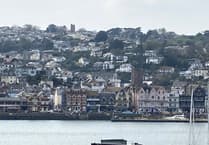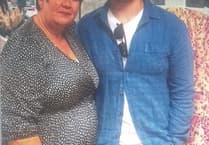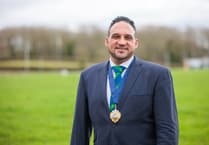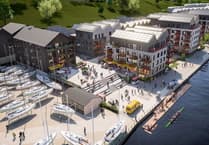MANY times my partner Bev and I have driven up and down College Way in Dartmouth and caught a glimpse of Britannia Royal Naval College and wondered: what goes on up the grand drive?
Well, on Saturday July 15 we had our chance as attended the first open day held at the college since Covid.
It has a fascinating history beginning in 1863 when the training hulks Britannia and Hindustan were moored on the river side of a hilly peninsula called Mount Boone, the majority of which was owned by the estate of Sir Walter Raleigh, who had received the property by Royal Grant from Queen Elizabeth I.
The current buildings dates from 1905, the architect was Sir George Aston Webb, whose previous commissions included Admiralty Arch and the East Front of Buckingham Palace.
The foundation stone was laid by King Edward VII in March 1902 and the first cadets entered the College three years later.
The bombing of the College in September 1942 forced a change in training policy and both staff and students were evacuated to Eaton Hall, Cheshire, until the end of the war.
The Royal Naval College re-opened in September 1946 and although structurally it remained unchanged, the number and character of its courses was greatly expanded.
By the mid seventies the number of graduate entrants had significantly increased.
One entrant of note was of course HRH The Prince of Wales, now King Charles III, who was a graduate Sub Lieutenant in the Autumn term entry of 1971.
Two important new groups of officers came with the arrival of the Special Duties Officers Pre-qualifying Course, St. George, in 1974 and the WRNS Officers’ Training Course, Talbot in 1976.
The training of female Naval Officers was integrated into that of their male counterparts in 1990 and the Special Duties Officers’ Greenwich course moved to Dartmouth in 1996.
BRNC has the distinction of being the place where the young Princess Elizabeth, the future Queen Elizabeth II is thought to have fallen for the dashing young Naval officer Philip Prince of Greece and Denmark, the future Duke of Edinburgh.
I was surprised to see that there were over 60 stalls and exhibits and there were special events running all day including a Ceremonial Drill Display, an Initial Military Fitness Display, Military Band Performance, Trafalgar Gun Company Cannon Display, The Old Gaffers Sea Shanty Band and the finale of Ceremonial Colours and Gun Salute.
We were escorted firstly by Commander Jon Cane then Captain Magnus Thompson, Royal Artillery Role Divisional Training Officer who had been seconded from the Army.
Both were very informative and generous with their time and we had the opportunity to meet the Commanding Officer of BRNC, Captain Sarah Oakley. You can read the interview in next week’s paper.
Outside the grounds we visited the Vahana officer training boats and HMS Pursuer on the town pontoon. She is often used to police attempted migrant crossings in the Channel.
The college will be organising more chances to visit so look out for more details.



